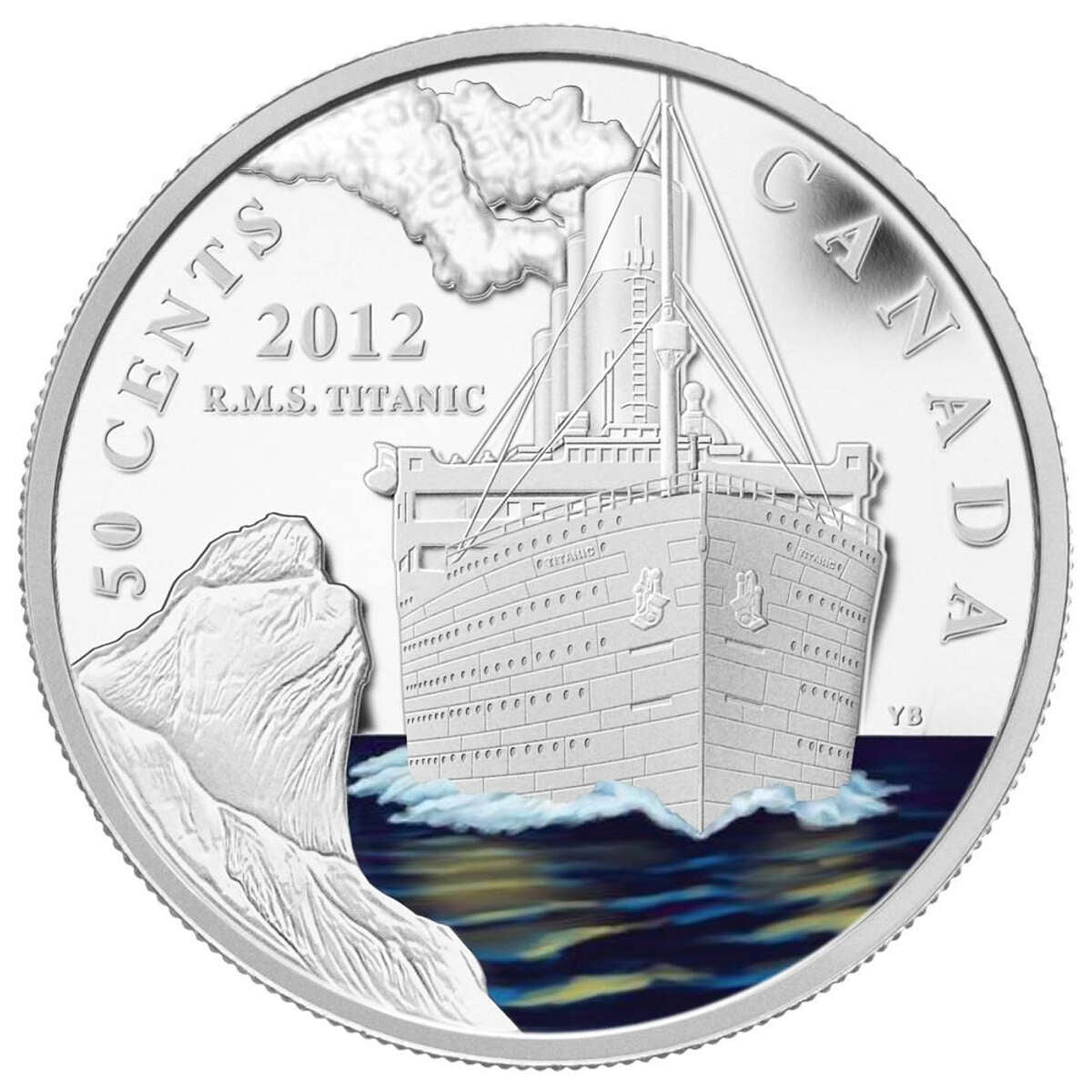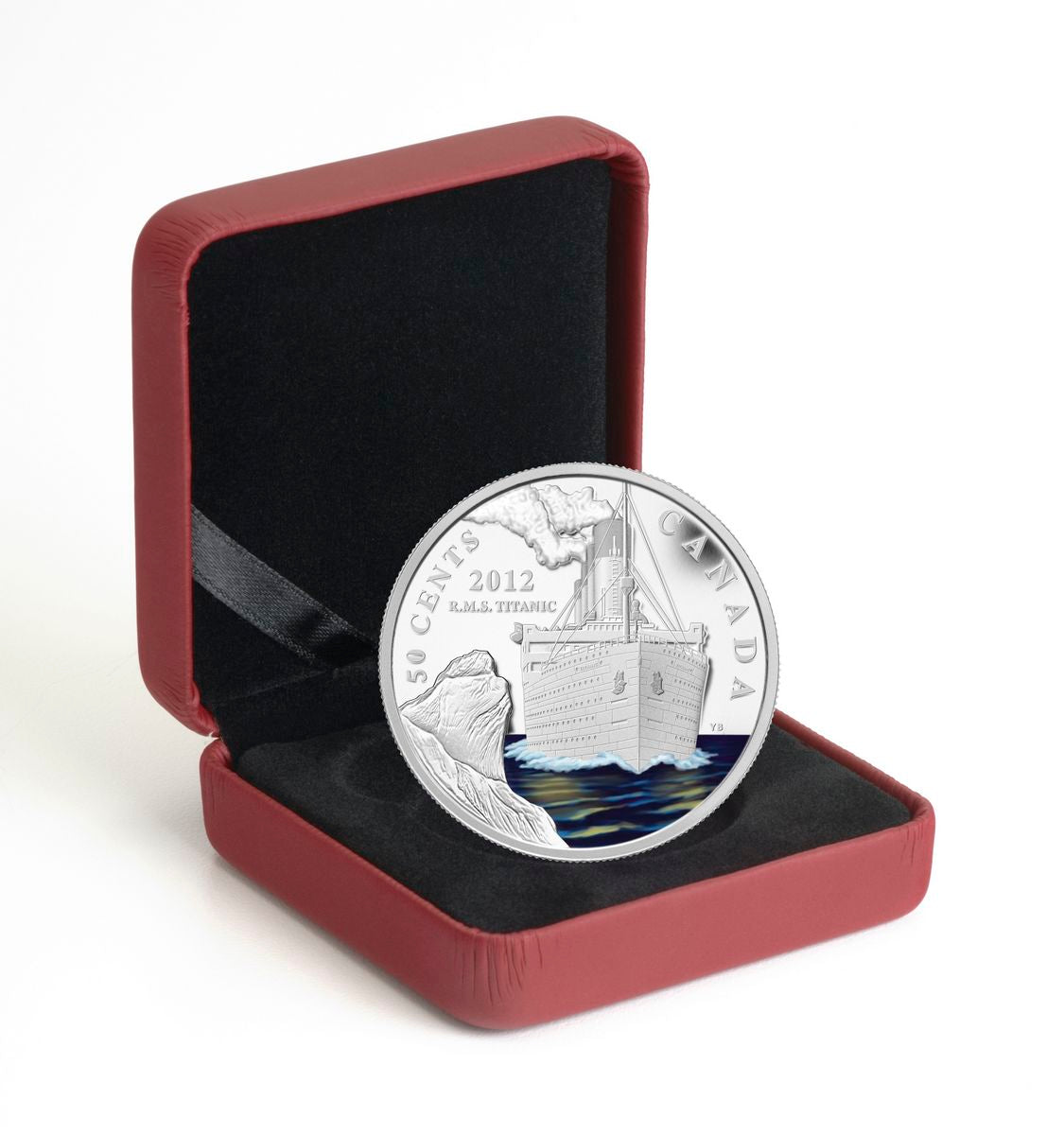Description
The reverse features a finely detailed image of the bow of the colossal vessel as it steams westward on its tragic maiden voyage. Painted North Atlantic waters seem to shimmer and flow in its wake. The iceberg that sealed Titanic’s fate lurks in the foreground. The commemorative image also features the words “R.M.S. Titanic 2012.”
The Titanic’s ill-fated life began with great fanfare in 1908, when the White Star Company announced its plans to beat all previous records in shipbuilding with a cross-Atlantic steamship unmatched in passenger capacity, luxury, and reliability. Completed in February 1912 and captained by White Star Line admiral Captain E. J. Smith, the 270-metre vessel was longer than four city blocks, more than 53 metres tall, weighed more than 45,000 tons, and comprised ten decks and numerous compartments divided into fifteen bulkheads. Its massive steel bulk was held together by more than 3 million rivets.
At 11:40 pm on the night of Sunday, April 14, 1912, the most colossal and sumptuous steamer in the world collided with an iceberg in frigid North Atlantic waters, about 900 kilometres (600 miles) off the coast of Nova Scotia. When the Titanic broke apart and sank less than three hours later, approximately two thirds of the over 2,200 passengers and crew aboard lost their lives.
Canada Responds:
After the original rescue of survivors by RMS Carpathia, which managed to rescue approximately 700 passengers and crew, several Canadian ships travelled from Halifax to the disaster area to recover victims’ bodies and personal effects; these ships included the cable ships CS Mackay-Bennett and Minia, lighthouse supply ship Montmagny, and sealing ship Algerine. Each body they recovered was taken to Halifax, the city closest to the disaster with direct rail and steamship connections, where city officials had set up a temporary morgue and asked undertakers from across eastern Canada to help bereaved families locate their lost loved ones.
Two-thirds of the deceased were identified. The remaining 150 unclaimed persons were buried in one of three cemeteries in Halifax: the non-denominational Fairview Lawn Cemetery, the Roman Catholic Mount Olivet Cemetery, and the Jewish Baron de Hirsch Cemetery.





